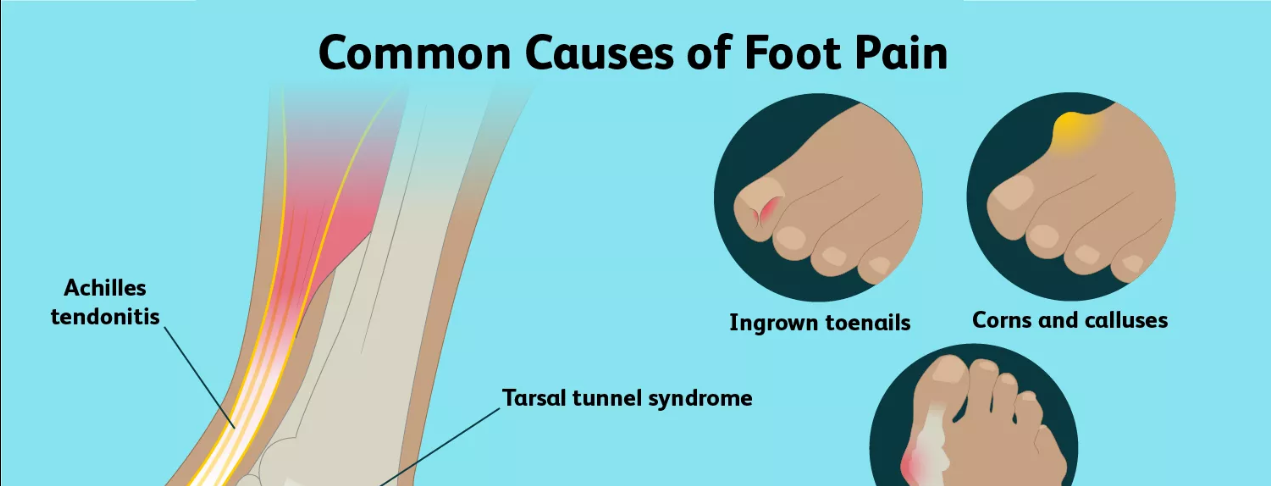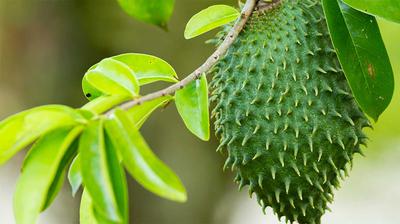Health
Pain in Various Foot Regions: Causes and Treatments

Our feet support us as we walk and run. But they can also hurt from shoes that don’t fit or conditions such as arthritis and gout. How your foot feels and where it hurts can explain the cause. Painkillers sold over-the-counter and ice packs might be beneficial.
Pain in the Toes
When you have toe pain, your doctor will ask you how the injury happened and whether it improves or worsens with certain activities. They will also want to know if you have other symptoms, like numbness or weakness. Toe sprains often happen when you jam, stub, or overextend one of your toes. It can damage tendons and other soft tissue. It can also cause bone fractures if the impact is severe enough. If you have a toe sprain, your primary care doctor may treat it with rest, ice, and pain relievers. Arthritis can affect the big toe joint, which causes pain and stiffness that worsen over time. This type of arthritis is called hallux rigidus. It can develop from an old injury that damaged articular cartilage, or it can be caused by the shape of your foot and by wearing shoes that don’t fit well. It can also lead to a hammertoe when the toe bends at the middle joint and sticks out like a claw. You can stand, walk, and run comfortably with custom foot orthotics. It can lessen foot discomfort brought on by ailments like arthritis.
Pain in the Arch
Problems with several tissues, muscles and bones can cause foot pain in the arch. Getting a proper diagnosis and treatment is important as it could lead to pain in other areas of the body, such as the ankle, knee or back. Most often, the cause of pain in the arch is plantar fasciitis which is irritation and inflammation of a band of tough tissue that connects the heel bone to the toes. Symptoms are usually the worst early morning or after long walks or prolonged standing. Other symptoms include stiffness, swelling and tenderness when pressed on. Treatment for arch pain may consist of ice and gentle stretching to loosen the tight muscles of the foot. It is also important to ensure that shoes fit properly and use inserts or support shoes if necessary. Exercises that assist the foot and arch in becoming stronger and more flexible are also highly beneficial.
Pain in the Ball of the Foot
This discomfort, which is felt at the base of your foot behind your toes, worsens with prolonged standing or walking. You may also feel shooting pains or numbness when you flex your toes. It is called metatarsalgia and can be caused by ill-fitting shoes, high-impact sports or repetitive movements like running. Morton neuroma and sesamoiditis are two more conditions that can produce discomfort in the ball of the foot. Morton neuroma is a condition where extra tissue builds up around one of the nerves leading to your toes, usually between the third and fourth toes. Prolonged compression leads to irritation and inflammation. Sesamoiditis is a similar condition irritating your feet’ small, pulley-like bones. It’s common in people who participate in high-impact activities and athletes. It can also occur due to certain foot shapes, such as when the second toe is longer than the big toe or small curled-up toes, known as hammertoes.
Pain in the Heel
Heel pain can be a chronic problem in people who often walk, run or jump. It’s often the result of a heel bone injury like a stress fracture or sprain, or it can be caused by wearing poorly constructed shoes. It can also result from abnormal foot mechanics that put too much strain on the arch and soft tissues of the feet; this is called overpronation. Plantar fasciitis, which develops when the soft tissue along the bottom of the foot strains or rips, is the most typical cause of pain at the back of the heel. It’s most common in people who run or jump often, have flat feet or high arches, or wear poor-fitting shoes with little or no arch support. You can treat this by icing the area and taking over-the-counter pain relievers. It’s also helpful to stretch heel and foot muscles and use shoe inserts with good arch support and cushioning.
Health
10 Benefits of charcoal soap and side effects

Table of Contents
Health
10 Benefits of long bell peppers

Discover the 10 health benefits of long bell peppers.
The long peppers may sound unfamiliar to some, but not in the ears of the Javanese. In Java, it is also known as Javanese pepper, with the scientific name of Piper Retrofractum Vahl.
It is considered as a spice and is commonly used for jamu, which is an Indonesian traditional herbal drink, hence its nickname is “cabe jamu” or jamu pepper.
If you want to learn more about long peppers, you are absolutely on the right track! For your information, long peppers grow at a maximum altitude of 600 m with 1,259 mm/year of rain. Anyway, what exactly is a long pepper?
Long peppers are also known as Balinese pepper or Indian pepper, following their original roots in South Asia, particularly India and Sri Lanka.
In India, long peppers are called ‘pippali’. Long peppers have four main functions, especially as a home remedy, cooking ingredient, medicinal herb, and catalyst to enhance the effects of other herbs.
The benefits of Javanese long peppers are somewhat similar to the health benefits of Indian long peppers.
Just as their scientific name suggests, long peppers contain piperine. Piperine is an alkaloid that works as a stimulant for poor blood circulation. Piperine is also found in black pepper and is also responsible for making both of them spicy.
Now here is the main question; Do long peppers have other uses besides being spices and a cooking ingredient? Yes, it does, and here are the health benefits of long pepper.
10 health benefits of long bell peppers
1.- Good for liver ailments
• Liver disease arises from our habit of indulging in unhealthy junk foods.
• At the end of the day, the liver becomes overworked.
• Long bell peppers balance the liver’s workload by removing toxins that have built up in the liver and that have been produced by digesting these types of foods.
• Here are also the best quick way to detox the liver after several years of drinking.
2.- Helps to lose weight
• The long pepper can burn fatty acids similar to other types of pepper without any side effects.
• In fact, it is considered a safer and healthier alternative compared to its clinical counterparts.
3.- Reduces the risk of diabetes
• Like the health benefits of red rice for diabetics, long bell peppers help alleviate diabetes by regulating the rate of glucose released into the blood system.
• Long peppers also stimulate insulin production.
• That is the main reason why long pepper is highly recommended for diabetic patients.
4.- Decreases bacterial infection
• The risk of bacterial infection may incline as the daily temperature increases.
• Unhygienic food, as well as unsterile water, can be prone to bacterial infection, causing an upset stomach.
• Long peppers can be used to counter these occurrences.
5.- Serves as a cough treatment
Long peppers treat a cough by making it a simple remedy. This is how you do it:
Step 1: Take 1 to 2 grams of the spice and fry it with a little ghee. Ghee is a kind of Indian butter.
Step 2: Bring it in while it cools.
If ghee is not available, you can use honey instead.
6.- Relieves indigestion
• The content of long peppers is capable of curing digestive problems.
7.- Decrease fever
• The antiseptic and antiseptic properties of long pepper can reduce fever or relax the throat.
• You can easily reduce a fever by mixing long pepper with a hot bowl of soup.
8.- Relieves toothache
• You can also cure a toothache by making a paste with pepper, salt, and water.
9.- Cure diarrhea
• Diarrhea can be cured by consuming a long pepper soup.
10.- Relieves asthma
• Long peppers are an alternative to relieve occasional asthma attacks and other asthma symptoms.
• However, you should not use it as a substitute for respiratory medicine.
How to use long peppers for traditional cures
About the previous pointers on the health benefits of long pepper, here are the simple recipes to make your long pepper remedy.
1.- To lower the fever
• Step 1 – Prepare 3g of dried long peppers
• Step 2 – Smooth until it reaches its softest state.
• Step 3: Infuse with hot water and consume.
• Despite its hot taste, it is suitable for both children and adults.
2.- It is a cure for toothache
• Step 1 – Prepare 3 long pepper leaves
• Step 2: squash them, but not to their smoothest shape.
• Step 3: prepare it in warm water
• Step 4: Use the gargle formula. Do it regularly until the toothache is completely gone.
3.- To overcome «Masuk Angin»
Masuk angin is an Indonesian term to describe the uneven distribution of gases within the body characterized by cold-like symptoms.
It has no direct translation into English, and no specific knowledge of this ‘disease’, therefore making ‘masuk angin’ is a large loose term. Long peppers can be treated ‘masuk angin’ by following this simple formula:
• Step 1 – Prepare 3g of long peppers, some brown sugar, ginger, and “temulawak” (Curcuma Zanthorrhiza).
• Step 2 – Boil until everything is softened and add warm water.
• Step 3 – Drink that formula while it’s still hot.
4.- Prevents abdominal spasm
• Step 1: Take 3 long pepper leaves and add a glass of water.
• Step 2: Boil both of them fully and let them cool for a while.
• Step 3: consume completely.
5.- Clean the postpartum ovary
• Step 1: Prepare 3 grams of long pepper roots.
• Step 2: Add warm water and bring to a full boil.
• Step 3 – Filter the water when you are done.
• Step 4: Consume the boiled water until done. It is suggested to consume it while it is still hot.
Those are just the healthy creations you can make with long bell peppers. The recipes are not proprietary so you can easily adjust them to better suit your preferences or requirements.
However, it is still highly recommended that you follow exactly what is written above. In addition to the long bell pepper uses listed above, there will be more below, however, the ones below are not specifically categorized by disease.
Generic long pepper recipe
Step 1 – Boil 150cc of water.
• Step 2 – Make it with 4 grams of pepper powder.
• Step 3: Consume while hot to get your maximum benefit.
If there are still long pepper powders left, you can also use them like this:
• Fill it inside the capsules for consumption at any time.
• Apply the powders directly to the affected area for toothache.
• Use it to treat swollen gums.
• In addition to health, long peppers are equally useful for planting and soil fertility.
• Thirty-eight uses of long peppers can be obtained by using them in a “jamu” or a traditional herbal drink, which has the potential to cure practically everything but the insecticide.
• Long pepper does not work with insecticide because it kills the reaction of the insecticide inside the plants.
Those are just the top long pepper health benefits that may sound unfamiliar to you, especially among the youngest these days. Either way, hope it helps!
Health
Ozempic for weight loss

Table of Contents
-

 Benefits4 months ago
Benefits4 months agoThe Benefits of Joining Gym Lumolog – Improve Your Fitness & Health
-

 Food1 year ago
Food1 year ago10 + Benefits of carrot juice and side effects
-

 Health1 year ago
Health1 year ago50 Super Healthy (And Very Often Cheap) Foods
-

 Health1 year ago
Health1 year ago5 Shocking health benefits of kinkeliba and side effects
-

 Food1 year ago
Food1 year ago8 shocking benefits of leek juice and side effects
-

 Health1 year ago
Health1 year ago15 health benefits of soursop leaves tea and side effects
-

 Health1 year ago
Health1 year ago15 Benefits of lipton tea and side effects
-

 Health1 year ago
Health1 year agoBenefits of guava leaves Sensually
